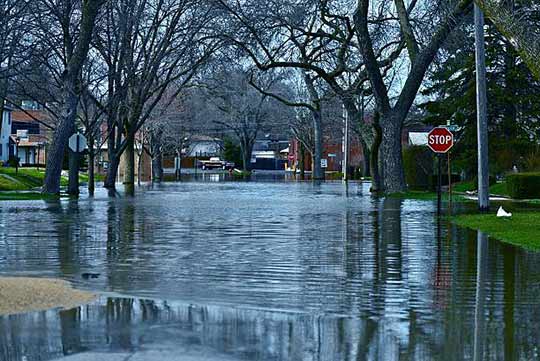
An Introduction to Budget-Friendly Flood Mitigation Strategies
In recent years, natural disasters such as floods have become increasingly common. These devastating events not only cause significant damage to infrastructure, but also claim many lives and disrupt communities. Urban areas are particularly vulnerable to flooding due to the presence of impermeable surfaces and inadequate drainage systems. As a result, it is crucial for cities and communities to implement effective flood mitigation strategies to minimize the impact of these natural disasters.
The Importance of Flood Mitigation
Flood mitigation refers to the measures and actions taken to reduce the risk and impact of flooding. These strategies aim to prevent or minimize flood damage, protect lives and property, and enhance the resilience of communities. Implementing effective flood mitigation measures is crucial for several reasons:
1. Protecting Lives and Property
The primary objective of flood mitigation strategies is to safeguard the lives and property of individuals residing in flood-prone areas. By implementing appropriate measures, communities can reduce the risk of injury or death during floods. Additionally, effective flood mitigation can help minimize property damage and financial losses associated with flooding.
2. Enhancing Community Resilience
Communities that are well-prepared for flooding are more resilient in the face of disasters. Flood mitigation measures not only reduce the immediate impact of flooding but also contribute to long-term community resilience. These strategies help communities recover more quickly after a flood, minimizing the social and economic disruptions caused by these events.
3. Preserving Infrastructure
Floods can cause extensive damage to critical infrastructure such as roads, bridges, and buildings. By implementing appropriate flood mitigation measures, communities can protect their infrastructure investments and prevent costly repairs or reconstructions. Preserving infrastructure is essential for maintaining the functionality and economic vitality of cities.
Budget-Friendly Flood Mitigation Strategies
While implementing flood mitigation measures is crucial, it is often challenging for communities to allocate sufficient financial resources for this purpose. However, there are several budget-friendly strategies that can be adopted to effectively mitigate flood risks without breaking the bank:
1. Green Infrastructure
Green infrastructure refers to the use of natural elements, such as vegetation and permeable surfaces, to manage stormwater runoff and reduce flooding. This approach is cost-effective and offers multiple benefits beyond flood mitigation. Green infrastructure strategies include:
- Constructing green roofs on buildings to absorb rainfall
- Creating rain gardens to capture and store stormwater
- Installing permeable pavements to allow water infiltration
- Protecting and restoring natural wetlands for their flood storage capacity
2. Floodplain Zoning
Floodplain zoning involves regulating land use in flood-prone areas to minimize flood damage. By restricting the construction of critical infrastructure and encouraging open spaces, the impact of flooding can be significantly reduced. This approach is particularly cost-effective when implemented in the early stages of urban development.
3. Flood Forecasting and Warning Systems
Early warning systems play a crucial role in flood mitigation. By utilizing advanced technology and real-time data, communities can anticipate flooding events and issue timely warnings to residents and businesses. These systems enable individuals to take preventative measures and evacuate if necessary, minimizing the potential loss of life.
4. Education and Awareness
Education and awareness campaigns are essential for promoting a culture of flood resilience within communities. By providing information on flood risks, preventive measures, and emergency preparedness, individuals can make informed decisions and take appropriate actions to protect themselves and their property. These campaigns can be conducted at schools, community centers, and through various media channels.
5. Collaboration and Partnerships
Flood mitigation requires collaboration among various stakeholders, including local government agencies, non-profit organizations, and community groups. By fostering partnerships, communities can leverage collective resources and expertise to implement cost-effective flood mitigation measures. Collaborative efforts can also lead to the sharing of best practices and innovative solutions.
The Way Forward
In conclusion, implementing budget-friendly flood mitigation strategies is essential for minimizing the impact of natural disasters on communities. By adopting measures such as green infrastructure, floodplain zoning, early warning systems, education, and collaboration, communities can enhance their resilience and protect lives and property from flooding. It is crucial for governments, organizations, and individuals to prioritize flood mitigation and allocate resources accordingly. By working together, we can build safer and more resilient communities that are better prepared to face the challenges of the future.







